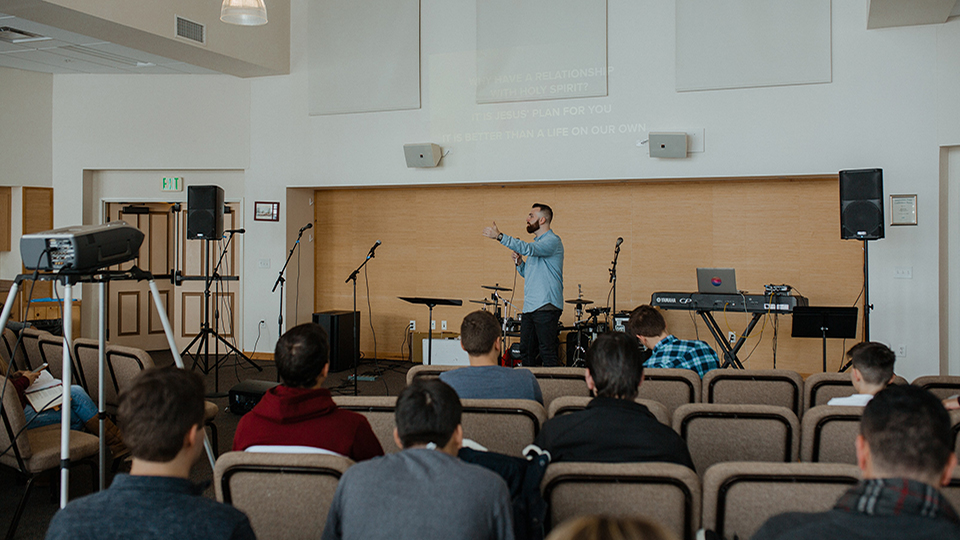
Once again, we continue our look at the metrics that drive church health. As we have seen, the “nickels and noses” measures of local church life aren’t truly the best measures of church health. Just because something is bigger doesn’t mean it’s better. If bigger was always better, then doctors would stop bugging us about expanding waistlines.
But what is better? We’ve already looked at missional effectiveness and assimilation ratios. These have shown us how we’re really doing at doing the job Jesus gave us to do. How many of us does it take to reach someone with the Gospel each year? Are we maintaining contact with those converts long enough to get them into the waters of baptism?
The AW Ratio
Today, let’s combine those two previous metrics into a “kingdom growth” ratio.
We call it the AW Ratio because it measures our average attendance against the number of people we have baptized in a year. If we have 100 people attending our church each week and we baptize 10 people in a calendar year, then our AW Ratio is 100:10 or 10:1. Make sense?
Here’s why it matters. In our attendance-driven focus in the local church, a growing church can result from a number of possible factors. Chief among these can often be transfer growth–people start coming to our local church that we’re previously attending another local church. So we have more people and their old church diminishes a bit, a net gain for our local church but no movement forward for THE Church.
Now, church transitions such as these happen all the time. The result often makes the expanding church feel more effective, after all they have more noses to count and more apparent evidence of success in their ministry efforts. Now, we could say a lot about the long-term stability of transfer growth, but that’s not our point in this blog. Here, we’re looking at measurements, and we really want to measure another kind of growth–true KINGDOM growth.
So, are we growing by reaching new people–people formerly unchurched or those who have drifted away from a relationship with God? Are we achieving net gains for the Church, by engaging such folks and bringing them to Christ? Growing churches may insist that this is how they’re truly growing–that transfer growth isn’t driving their increasing attendances–but how do you know?
The AW Ratio is here to help. You see, most evangelical churches list water baptism as a requirement for membership. So those we are truly adding to the Church each year are those that are converted and baptized, thus becoming potential new members of the Church. Now, I’m not trying to mess with your theology. We know that at conversion an individual is adding to Christ’s kingdom, but it’s at the point of baptism that they are potentially added to membership in our local community of believers. So newly-baptized converts comprise the “non-transfer growth” of our local church.
So how are we doing with that?
Now, without getting too math technical and overburdening this blog with stuff many may not wish to read, let me briefly mention that the AW Ratio is actually found by combining our two previous metrics–the AC and CW Ratios. In simplest form, the AW Ratio is the product of those other two ratios so:
AC x CW = AW
So let’s say you have a church of 90 people and you had 18 new converts last year. That means your AC Ratio is a healthy 5.0, because 90/18 is 5. Then lets say that you baptized 6 people in that same year, so your CW Ratio is a healthy 3.0, because 18/6 is 3. That means your AW Ratio is 15.0, a number you can get by multiplying 5.0 and 3.0. You can also get the number by using the attendance and baptism numbers themselves (90 / 6 = 15). Make sense?
Here’s what you need to know. A healthy AW Ratio should be 15.0 or less. Frankly, if your AW is greater than 20, you’re likely not reaching enough new people to maintain the local church at its current attendance, at least not for long. Your attendance may be climbing, but if you’re not baptizing at least one person for every 15 in attendance each year, your growth is predominantly of the transfer variety, and that may not prove the healthiest long-term.
In our previous metrics blogs, we saw that in the U.S. Assemblies of God (our denominational group), small churches tend to struggle with the first metric and large churches struggle with the second. When you combine the two, the AW Ratios tend to be very similar, regardless of church size. The AW Ratios in 2014 were healthiest for churches between 50 and 400 in attendance (AW between 13 and 13.5). Churches under 50 and those between 700 and 1000 had the worst AW Ratios (almost 16.5) which tells us that many of these churches may have trouble sustaining growth into the future.
What is your church’s AW Ratio? Is it healthy? If not, which factor is the source of the struggle? Are you not reaching people or are you not keeping those you reach long enough to see them baptized?
The AW Ratio helps us keep the main thing in focus. We are to make disciples–not just grow churches! Remember that the kingdom of God is not about numbers. IT’S ABOUT STORIES! And it’s those individual stories, those journeys from sinner to baptized believer, that prove the health of our local church.
Want more ThoughtHub content?
Join the 3000+ people who receive our newsletter.
*ThoughtHub is provided by SAGU, a private Christian university offering more than 60 Christ-centered academic programs – associates, bachelor’s and master’s and doctorate degrees in liberal arts and bible and church ministries.



